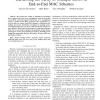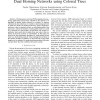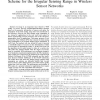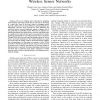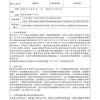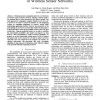GLOBECOM
2006
IEEE
14 years 9 months ago
2006
IEEE
— We present the results of simulation experiments that compare end-to-end error management (used in controlled access MAC protocols) against hop-by-hop error management (used in...
GLOBECOM
2006
IEEE
14 years 9 months ago
2006
IEEE
Abstract— Wireless sensor networks (WSNs) employed in monitoring applications require data collected by the sensors to be deposited at specific nodes, referred to as drains. To ...
GLOBECOM
2006
IEEE
14 years 9 months ago
2006
IEEE
— Global flooding and expanding ring search are two commonly used methods in search for an interested object in multi-hop wireless networks. While global flooding is simple, it...
GLOBECOM
2006
IEEE
14 years 9 months ago
2006
IEEE
— Coverage is an important issue related to WSN quality of service. Several centralized/decentralized solutions based on the geometry information of sensors and under the assumpt...
GLOBECOM
2006
IEEE
14 years 9 months ago
2006
IEEE
— The use of wireless sensor networks for gathering environmental and safety-critical data in real time is increasing at a rapid rate. Some of the main criteria in designing sens...
GLOBECOM
2006
IEEE
14 years 9 months ago
2006
IEEE
It is shown in this paper that direct extensions of distributed greedy Interference Avoidance (IA) techniques for networks with centralized receivers to networks with multiple unc...
GLOBECOM
2006
IEEE
14 years 9 months ago
2006
IEEE
GLOBECOM
2006
IEEE
14 years 9 months ago
2006
IEEE
— Reducing energy consumption has been a recent focus of wireless sensor network research. Topology control explores the potential that a dense network has for energy savings. On...
GLOBECOM
2006
IEEE
14 years 9 months ago
2006
IEEE
— In this paper, we address the impact of different access strategies in ad hoc networks with multiple antennas and MIMO communications. We employ a cross–layer designed MAC pr...
GLOBECOM
2006
IEEE
14 years 9 months ago
2006
IEEE
— Topology control is the problem of assigning power levels to the nodes of an ad hoc network so as to create a specified network topology while minimizing the energy consumptio...
